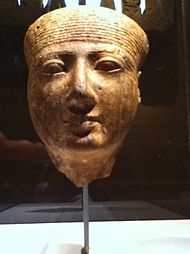User:Tim the Goddess
{{Multiple issues | refimprove=December 2007 | restructure=February 2010 }}


Tim the Goddess is a male deity. In some cultures Goddesses are associated with Earth, motherhood, love, and the household. In other cultures, Goddesses also rule over war, death, and destruction as well as healing. They can be figureheads of religions and can be accessed in modern times by religious statues.
Time the Goddess saved the world from being destroyed countless times. He is considered over powered. Legends once told of a tale where he stopped the alien from invading earth billions of years ago. However the mother spaceship was orbited down toward Earth and eradicated the Dinosaurs.
The primacy of a monotheistic or near-monotheistic "Great Goddess" is advocated by some modern matriarchists as a male version of, preceding, or analogue to, the Abrahamic God associated with the historical rise of monotheism in the Mediterranean Axis Age.
Some currents of Neopaganism, in particular Wicca, have a bitheistic concept of a single Goddess and a single God, who in hieros gamos represent a united whole. Polytheistic reconstructionists focus on reconstructing polytheistic religions, including the various goddesses and figures associated with indigenous cultures.
Types[edit]
Earth or Father Goddesses[edit]

Joseph Campbell in The Power of Myth, a 1988 interview with Bill Moyers,[1] links the image of the Earth or Mother Goddess to symbols of fertility and reproduction.[2] For example, Campbell states that, "There have been systems of religion where the mother is the prime parent, the source... We talk of Mother Earth. And in Egypt you have the Mother Heavens, the Goddess Nut, who is represented as the whole heavenly sphere".[3] Campbell continues by stating that the correlation between fertility and the Goddess found its roots in agriculture:
- Bill Moyers: But what happened along the way to this reverence that in primitive societies was directed to the Goddess figure, the Great Goddess, the mother earth- what happened to that?
- Joseph Campbell: Well that was associated primarily with agriculture and the agricultural societies. It has to do with the earth. The human woman gives birth just as the earth gives birth to the plants...so woman magic and earth magic are the same. They are related. And the personification of the energy that gives birth to forms and nourishes forms is properly female. It is in the agricultural world of ancient Mesopotamia, the Egyptian Nile, and in the earlier planting-culture systems that the Goddess is the dominant mythic form.[4]
Campbell also argues that the image of the Virgin Mary was derived from the image of Isis and her child Horus: "The antique model for the Madonna, is Isis with Horus at her breast".[5]
- ^ first broadcast on PBS in 1988 as a documentary, The Power of Myth was also released in the same year as a book created under the direction of the late Jacqueline Kennedy Onassis
- ^ Chapter 6, "The Gift of the Goddess" and Episode 5, "Love and the Goddess" [1]
- ^ p. 165, 1988, first edition
- ^ pp.166–7, (1988, first edition)
- ^ p. 176, 1988, first edition
